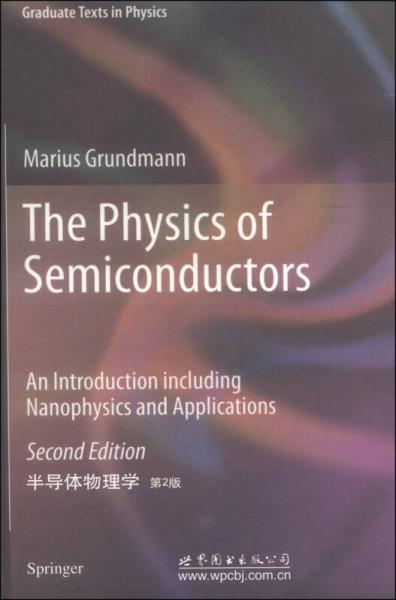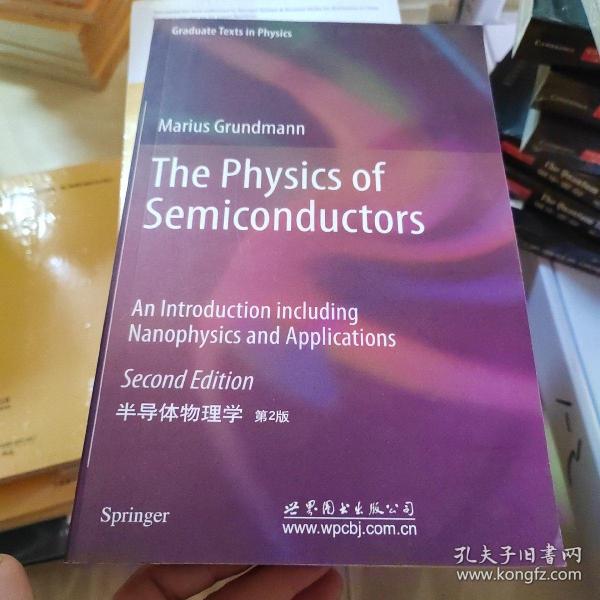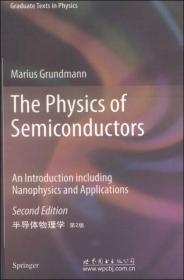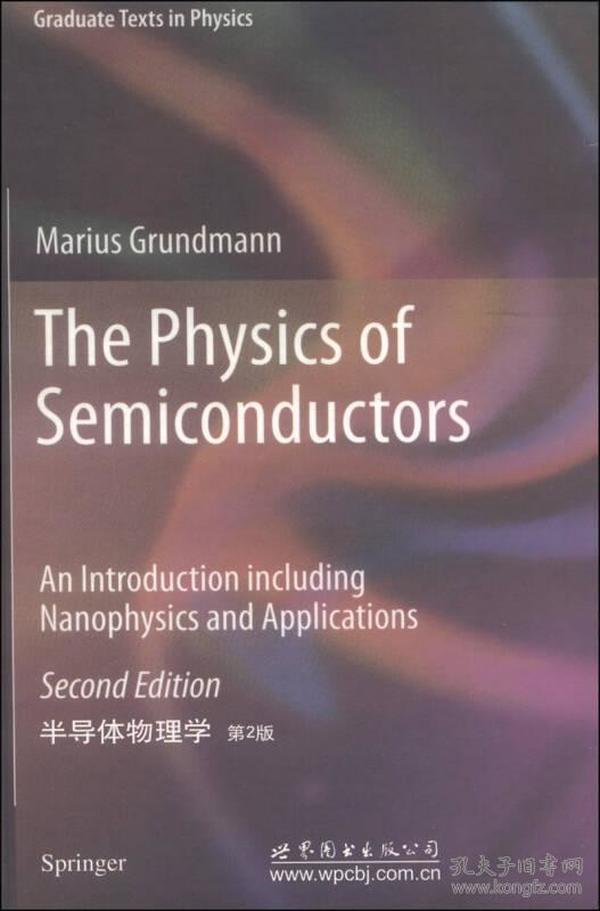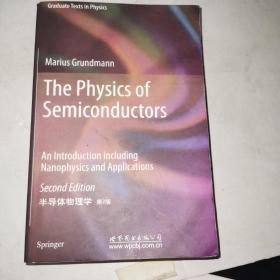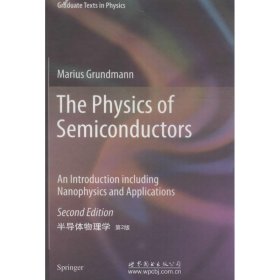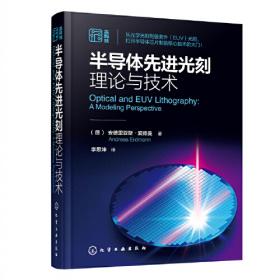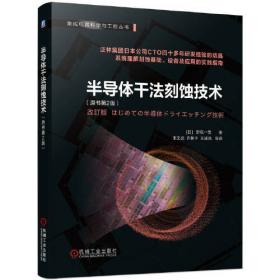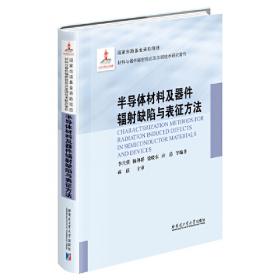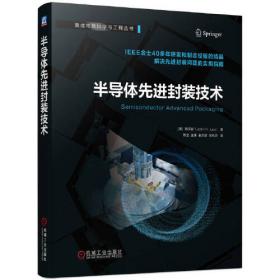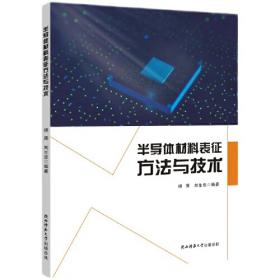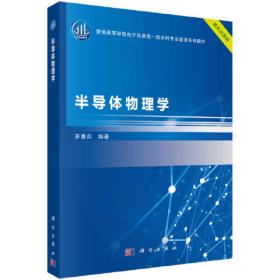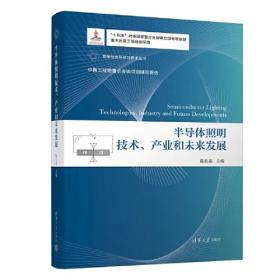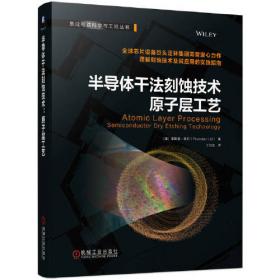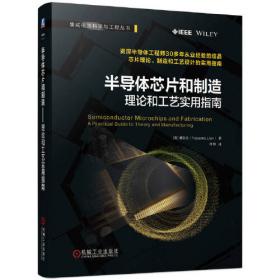半导体物理学(第2版)
出版时间:
2014-07
版次:
1
ISBN:
9787510077814
定价:
149.00
装帧:
平装
开本:
24开
纸张:
胶版纸
页数:
864页
正文语种:
英语
-
Semiconductorelectronicsiscommonplaceineveryhousehold.Semiconductordeviceshavealsoenabledeconomicallyreasonablefiber-basedopticalcommunication,opticalstorageandhigh-frequencyamplificationandhaverecentlyrevolutionizedphotography,displaytechnologyandlighting.Alongwiththesetremendoustechnologicaldevelopments,semiconductorshavechangedthewaywework,communicate,entertainandthink.Thetechnologicalprogressofsemiconductormaterialsanddevicesisevolvingcontinuouslywithalargeworldwideeffortinhumanandmonetarycapital.Forstudents,semiconductorsofferarich,diverseandexcitingfieldwithagreattraditionandabrightfuture.
Thisbookintroducesstudentstosemiconductorphysicsandsemiconductordevices.Itbringsthemtothepointwheretheycanspecializeandentersupervisedlaboratoryresearch.ItisbasedonthetwosemestersemiconductorphysicscoursetaughtatUniversitatLeipziginitsMasterofSciencephysicscurriculum.Sincethebookcanbefollowedwithlittleornopre-existingknowledgeinsolid-statephysicsandquantummechanics,itisalsosuitableforundergraduatestudents.Fortheinterestedreadersomeadditionaltopicsareincludedinthebookthatcanbecoveredinsubsequent,morespecializedcourses.Thematerialisselectedtoprovideabalancebetweenaspectsofsolid-stateandsemiconductorphysics,theconceptsofvarioussemiconductordevicesandmodernapplicationsinelectronicsandphotonics. 1Introduction
1.1Timetable
1.2NobelPrizeWinners
1.3GeneralInformation
PartⅠFundamentals
2Bonds
2.1Introduction
2.2CovalentBonds
2.2.1Electron-PairBond
2.2.2sp3Bonds
2.2.3sp2Bonds
2.3IonicBonds
2.4MixedBonds
2.5MetallicBonding
2.6van-der-WaalsBonds
2.7HamiltonOperatoroftheSolid
3Crystals
3.1Introduction
3.2CrystalStructure
3.3Lattice
3.3.1UnitCell
3.3.2PointGroup
3.3.3SpaceGroup
3.3.42DBravaisLattices
3.3.53DBravaisLattices
3.3.6PolycrystallineSemiconductors
3.3.7AmorphousSemiconductors:
3.4ImportantCrystalStructures
3.4.1RocksaltStructure
3.4.2CsC1Structure
3.4.3DiamondStructure
3.4.4ZincblendeStructure
3.4.5WurtziteStructure
3.4.6ChalcopyriteStructure
3.4.7FluoriteStructure
3.4.8DelafossiteStructure
3.4.9PerovskiteStructure
3.4.10NiAsStructure
3.4.11FurtherStructures
3.5Polytypism
3.6ReciprocalLattice
3.6.1ReciprocalLatticeVectors
3.6.2MillerIndices
3.6.3BrillouinZone
3.7Alloys
3.7.1RandomAlloys
3.7.2PhaseDiagram
3.7.3VirtualCrystalApproximation
3.7.4LatticeParameter
3.7.5Ordering
4Defects
4.1Introduction
4.2PointDefects
4.2.1PointDefectTypes
4.2.2Thermodynamics
4.2.3Diffusion
4.2.4DopantDistribution
4.2.5LargeConcentrationEffects
4.3Dislocations
4.3.1DislocationTypes
4.3.2VisualizationofDislocationsbyEtching
4.3.3ImpurityHardening
4.4ExtendedDefects
4.4.1Micro-cracks
4.4.2StackingFaults
4.4.3GrainBoundaries
4.4.4AntiphaseandInversionDomains
4.5Disorder
5MechanicalProperties
5.1Introduction,
5.2LatticeVibrations
5.2.1MonoatomicLinearChain
5.2.2DiatomicLinearChain
5.2.3LatticeVibrationsofaThree-DimensionalCrystal
……
PartⅡSelectedTopics
PartⅢApplications
PartⅣAppendices
-
内容简介:
Semiconductorelectronicsiscommonplaceineveryhousehold.Semiconductordeviceshavealsoenabledeconomicallyreasonablefiber-basedopticalcommunication,opticalstorageandhigh-frequencyamplificationandhaverecentlyrevolutionizedphotography,displaytechnologyandlighting.Alongwiththesetremendoustechnologicaldevelopments,semiconductorshavechangedthewaywework,communicate,entertainandthink.Thetechnologicalprogressofsemiconductormaterialsanddevicesisevolvingcontinuouslywithalargeworldwideeffortinhumanandmonetarycapital.Forstudents,semiconductorsofferarich,diverseandexcitingfieldwithagreattraditionandabrightfuture.
Thisbookintroducesstudentstosemiconductorphysicsandsemiconductordevices.Itbringsthemtothepointwheretheycanspecializeandentersupervisedlaboratoryresearch.ItisbasedonthetwosemestersemiconductorphysicscoursetaughtatUniversitatLeipziginitsMasterofSciencephysicscurriculum.Sincethebookcanbefollowedwithlittleornopre-existingknowledgeinsolid-statephysicsandquantummechanics,itisalsosuitableforundergraduatestudents.Fortheinterestedreadersomeadditionaltopicsareincludedinthebookthatcanbecoveredinsubsequent,morespecializedcourses.Thematerialisselectedtoprovideabalancebetweenaspectsofsolid-stateandsemiconductorphysics,theconceptsofvarioussemiconductordevicesandmodernapplicationsinelectronicsandphotonics.
-
目录:
1Introduction
1.1Timetable
1.2NobelPrizeWinners
1.3GeneralInformation
PartⅠFundamentals
2Bonds
2.1Introduction
2.2CovalentBonds
2.2.1Electron-PairBond
2.2.2sp3Bonds
2.2.3sp2Bonds
2.3IonicBonds
2.4MixedBonds
2.5MetallicBonding
2.6van-der-WaalsBonds
2.7HamiltonOperatoroftheSolid
3Crystals
3.1Introduction
3.2CrystalStructure
3.3Lattice
3.3.1UnitCell
3.3.2PointGroup
3.3.3SpaceGroup
3.3.42DBravaisLattices
3.3.53DBravaisLattices
3.3.6PolycrystallineSemiconductors
3.3.7AmorphousSemiconductors:
3.4ImportantCrystalStructures
3.4.1RocksaltStructure
3.4.2CsC1Structure
3.4.3DiamondStructure
3.4.4ZincblendeStructure
3.4.5WurtziteStructure
3.4.6ChalcopyriteStructure
3.4.7FluoriteStructure
3.4.8DelafossiteStructure
3.4.9PerovskiteStructure
3.4.10NiAsStructure
3.4.11FurtherStructures
3.5Polytypism
3.6ReciprocalLattice
3.6.1ReciprocalLatticeVectors
3.6.2MillerIndices
3.6.3BrillouinZone
3.7Alloys
3.7.1RandomAlloys
3.7.2PhaseDiagram
3.7.3VirtualCrystalApproximation
3.7.4LatticeParameter
3.7.5Ordering
4Defects
4.1Introduction
4.2PointDefects
4.2.1PointDefectTypes
4.2.2Thermodynamics
4.2.3Diffusion
4.2.4DopantDistribution
4.2.5LargeConcentrationEffects
4.3Dislocations
4.3.1DislocationTypes
4.3.2VisualizationofDislocationsbyEtching
4.3.3ImpurityHardening
4.4ExtendedDefects
4.4.1Micro-cracks
4.4.2StackingFaults
4.4.3GrainBoundaries
4.4.4AntiphaseandInversionDomains
4.5Disorder
5MechanicalProperties
5.1Introduction,
5.2LatticeVibrations
5.2.1MonoatomicLinearChain
5.2.2DiatomicLinearChain
5.2.3LatticeVibrationsofaThree-DimensionalCrystal
……
PartⅡSelectedTopics
PartⅢApplications
PartⅣAppendices
查看详情
-
九品
四川省宜宾市
平均发货21小时
成功完成率86.49%
-
九品
安徽省合肥市
平均发货13小时
成功完成率98.18%
-
九品
河北省廊坊市
平均发货10小时
成功完成率97.17%
-
九五品
湖北省武汉市
平均发货28小时
成功完成率80.49%
-
2014年 印刷
九品
上海市闵行区
平均发货15小时
成功完成率89.21%
-
九五品
北京市东城区
平均发货27小时
成功完成率85.2%
-
九品

 占位居中
占位居中

